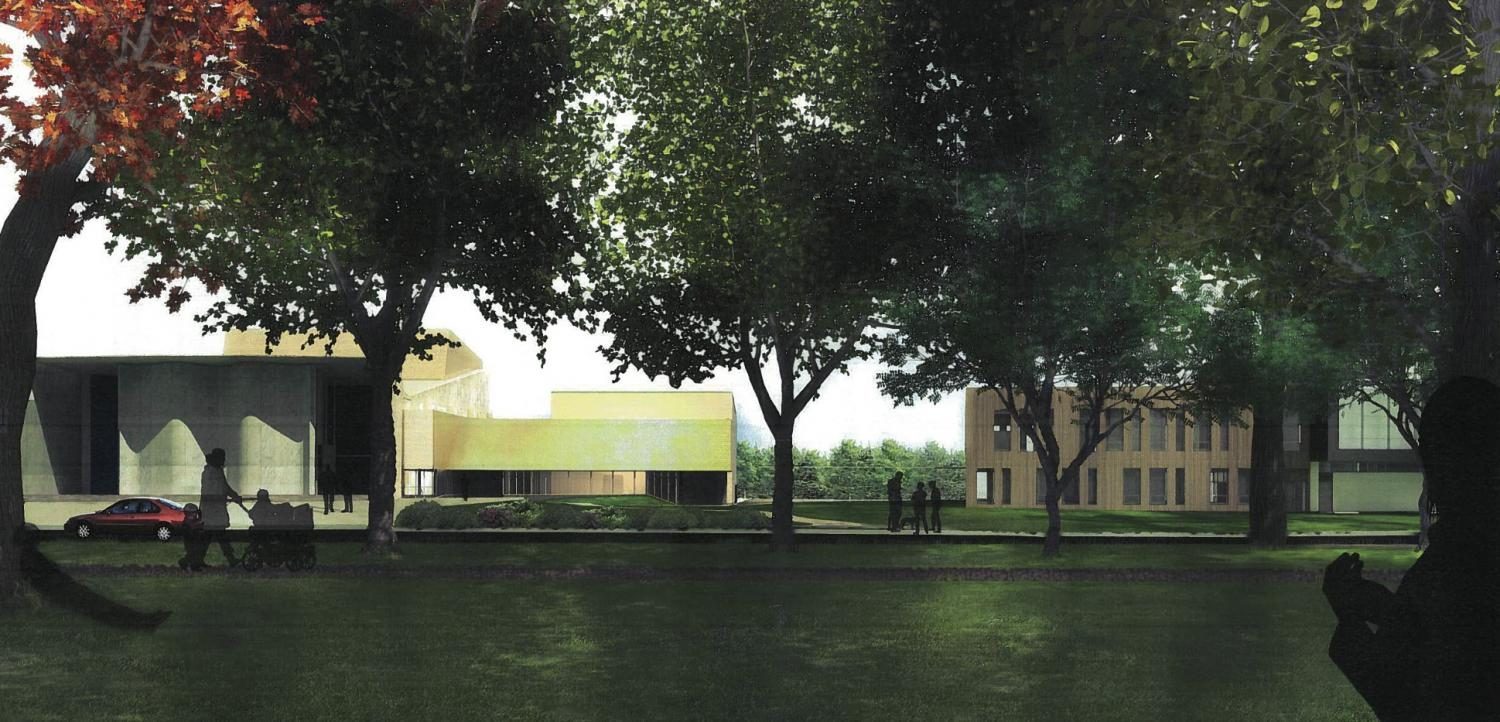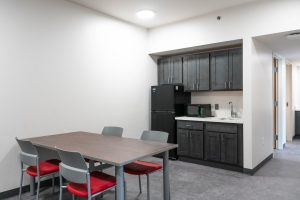$14-Million Hall Annex Renovations to Begin in June
Photo courtesy of Westlake Reed Leskosky
A mockup of the Hall Annex renovation and expansion shows a projection of how the completed building will look. The $14-million project will begin in June and is expected to be finished by summer 2018.
April 28, 2017
Student actors, singers and dancers will have a brand new space to perform in next calendar year, after the City Planning Commission approved a long-awaited renovation and expansion of Hall Annex April 19.
The $14-million project includes both a complete renovation of Hall Annex and the addition of a medium-sized “Adaptable Theater” in the space between the Peter B. Lewis Gateway Center and Hall Auditorium. To Managing Director for Theater, Dance and Opera Eric Steggall, the new theater offers new opportunities and excitement.
“I think having the shiniest, coolest, sexiest new theater in Northeast Ohio on our campus is a cool thing to have, and there’s no other large-scale theaters being built that I’m aware of anywhere around here geographically,” Steggall said. “I think it’s going to open up exponentially new ways of thinking and teaching and instructing and designing and producing art for anyone who chooses to take advantage of it.”
The new Adaptable Theater will seat 200–300 people, depending on how the seats are arranged, allowing for a broad variety of performances.
“Not every theater or dance piece is created for a 500-seat auditorium,” Steggall said. “There’s a need to be a little more intimate.”
The new addition will also include a variety of support spaces for teaching and production — spaces that Hall Annex wasn’t originally designed to have, according to Steggall.
“We’re adding additional classrooms,” Steggall said. “We’re adding additional rehearsal studios. We’re adding a new scene shop and a new costume shop, so our ability to deliver is going to be enhanced.”
Simultaneously, the College plans to completely renovate Hall Annex, giving the 57-year-old building everything from new heating and air conditioning to new windows and a paint job. The renovation will also expand the Hall Annex lobby to make space for an elevator, making the two-story building more accessible.
The College will also raise the ceiling of the Little Theater and rename it the John Kander Theater, after the famous Broadway composer and Oberlin alumnus who donated toward its renovation.
“Currently, the Little Theater is a converted classroom, basically, so it’s very small, and the ceiling is only about 11 [or] 12 feet in the air, which really limits what we’re able to do from a design standpoint, both scenically and lighting-wise,” Steggall said.
Construction is set to begin in June and finish during summer 2018, according to College Architect Steven Varelmann. Hall Auditorium itself should remain usable throughout the construction process.
Vice President of Finance and Administration Mike Frandsen estimates that the expansion will cost $13–14 million and stated that the vast majority of the money came from fundraising.
According to Vice President for Development and Alumni Affairs Bill Barlow, eight anonymous donors provided more than 90 percent of the funds for the expansion. In an email to the Review, Barlow praised the donors, who he described as each having a “long-standing interest in theater, opera and the arts at Oberlin,” and asserted that they would not have given as generously for another project.
“Over the past 60 years there have been multiple efforts to raise the funds needed to address [Hall’s] shortcomings, and it’s wonderful these eight individuals were willing to step forward to finally make this happen,” Barlow said.
Barlow said that the Board of Trustees made the Hall expansion a fundraising priority for the Oberlin Illuminate campaign in June 2012.
Many student activists remain critical of the College’s penchant for expensive capital projects that do not reflect perceived student priorities.
“The auditorium expansion, when contextualized with [The Hotel at Oberlin] and the [Philips gym] expansion, seems to continue a pattern of prioritizing prestige building capital projects that service an isolated subset of campus while ignoring projects that directly service a large number of students,” wrote Jesse Docter, College junior, student senator and Presidential Search Committee member, in an email to the Review.
“Until the trustees and administrators find a way to substantively incorporate students into the capital planning process, students will continue to view the administration’s capital planning priorities with skepticism.”


























